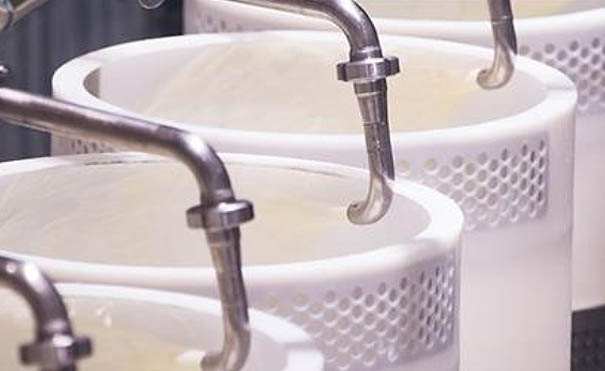Milk is a commodity that is widely consumed worldwide, despite its high perishability and short shelf-life. Modern processing and pressure measurement instrumentation capabilities have dramatically improved the stability of milk-based goods which are susceptible to dangerous bacterial growth and colloidal degradation over very short periods.
This is primarily due to the complex biological composition of raw milk, which includes: enzymes; fat; lactose; various minerals; proteins; and vitamins, alongside numerous trace elements.
These constituent parts behave differently under varying thermodynamic conditions. Dispersive fat globules migrate readily through milk’s liquid phase – typically at higher rates under ambient pressure or elevated temperatures. Agglomeration of these fatty particles will cause milk to separate and spoil, so it is crucial that milk is subjected to consistent temperature and pressure measurement throughout processing.
This blog post will explore dairy processing in more detail, with a focus on the importance of pressure measurement.
Pressure measurement during pasteurisation
Raw milk may be subjected to pasteurisation directly following delivery, or after a cooling-down period where it is stored in agitated tanks at controlled temperatures of approximately 5°C (41°F). Pressure measurement for dairy storage tanks requires a sensor and transmitter with hygienic connections to eliminate the potential for hazardous cross-contamination. Once the raw material has reached suitable conditions, it is subjected to thermal processing.
Optimising this process requires the ubiquitous use of stainless steels for all instruments in the processing chain, as opposed to merely wetted parts and surfaces. It is also important to use process connections with valid certifications for use in the dairy industry, including 3-A; EEHDG; MID; or OIML-117. ABB supplies both 261 and 266 pressure transmitters with type DRD, DIN11864, or Varivent process connections that are certified for dairy production applications. These are widely utilised in pasteurisation processes.
Pasteurisation is a ubiquitous process in the dairy industry. It was initially developed as a method for sterilising beverages like wine but was subsequently deemed useful for extending the shelf life of processed milk. It is performed by heating milk to temperatures in the region of 74°C (165°F) for up to thirty seconds before it is re-cooled. This effectively destroys harmful microorganisms before the milk can irreversibly destabilise. Pressure measurement is required to maintain overpressure conditions, which ensures that treated and untreated milk does not come into contact. It is also important to perform pressure measurement of the heating cells to mitigate adverse pressure build-up that could contribute to mechanical failure and costly downtime.
Traditional milk processing still utilises a form of pressurised denaturation to achieve a homogenous product that is in-keeping with regulatory standards. Once the raw milk has been pasteurised and standardised, it is passed through a sieve under pressure to separate fatty particles and redistribute them throughout the liquid phase. This demands constant flow pressure measurement within tight degrees of tolerance to ensure that the end-product reaches an optimal consistency without undesirable heterogeneities. It is also important to use an internal vegetable oil such as Neobee, or white oil, in process instruments to ensure Federal Drug Administration (FDA) compliance to ensure the process will not be contaminated.
Pressure Measurement with ABB
ABB is one of the world’s largest suppliers of test and measurement instrumentation for industrial and commercial applications. W H Good Automation have supplied an extensive selection of ABB pressure measurement devices for dairy farm and milk processing applications. If you would like to learn more, read our brochure ‘ABB Measurement Solutions for Dairies‘.




